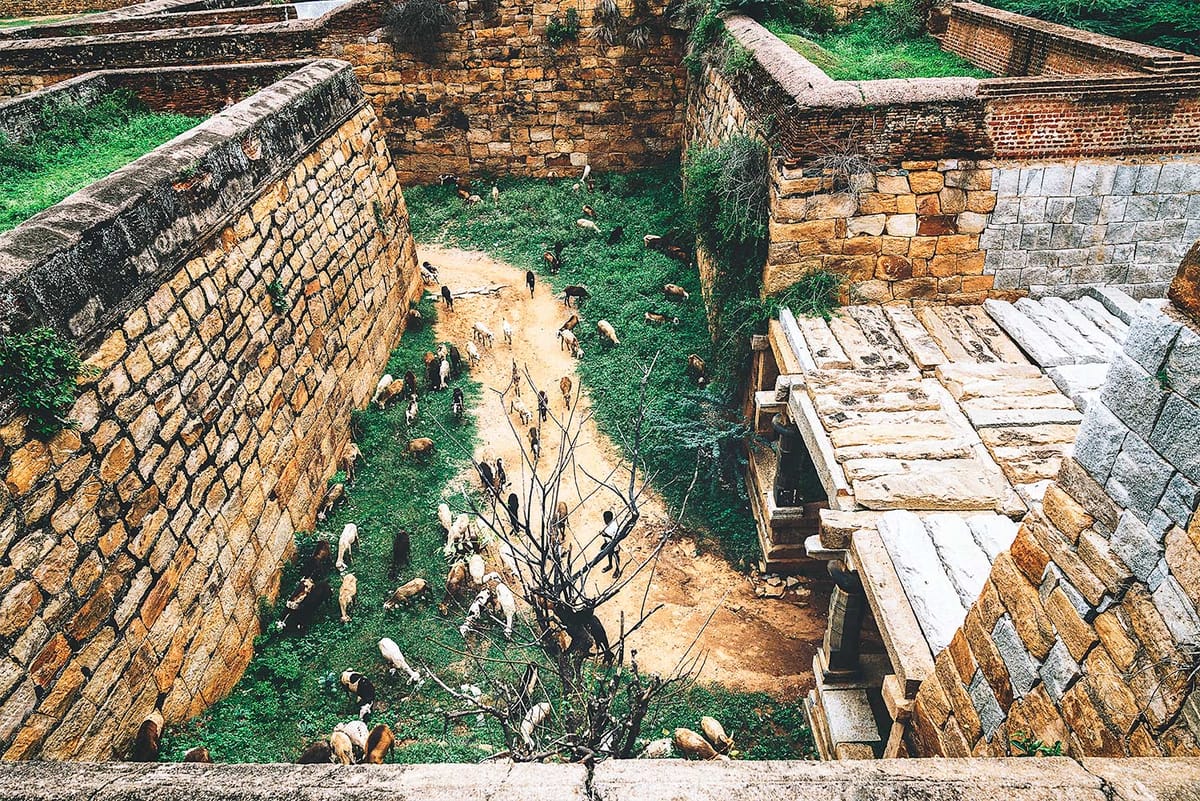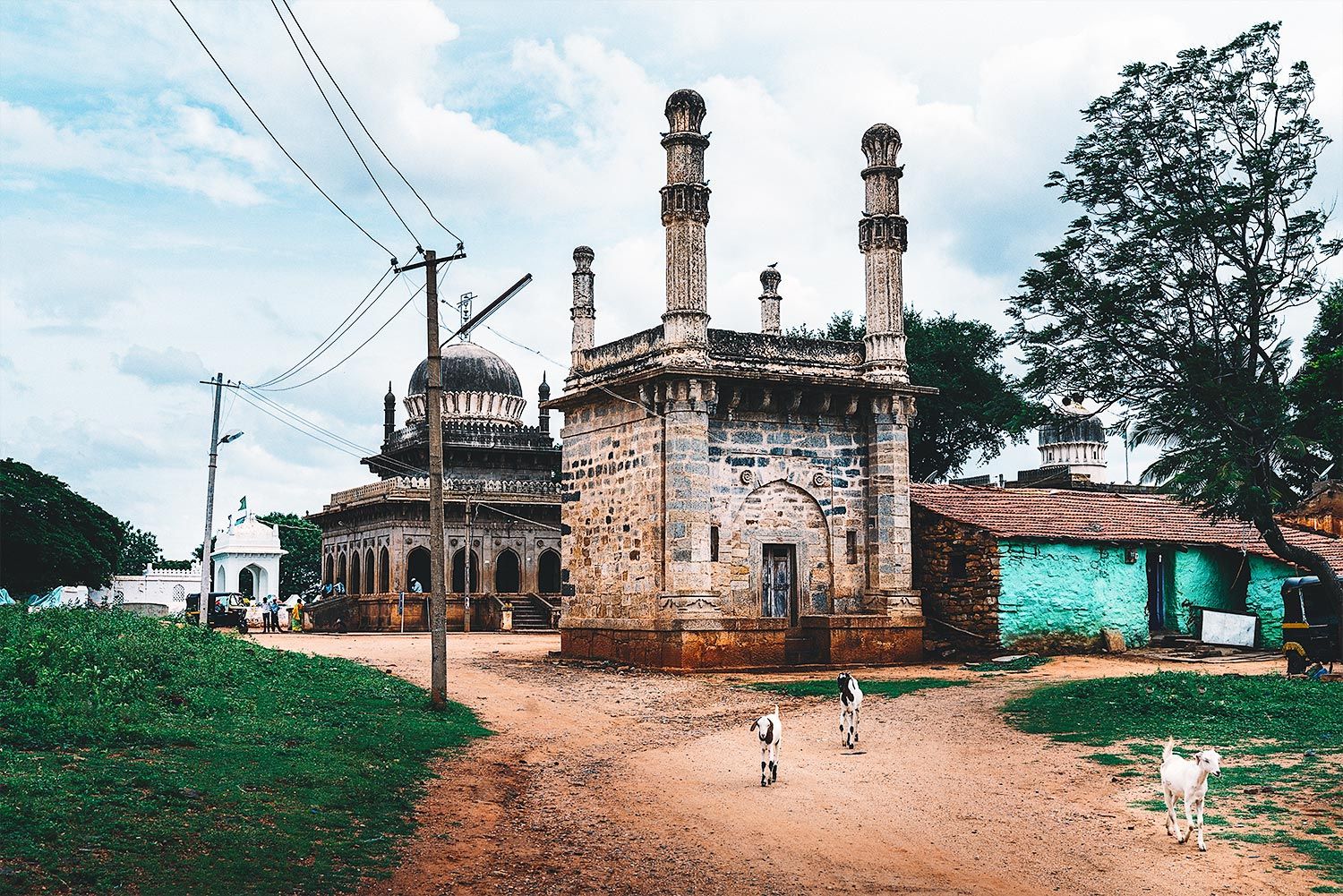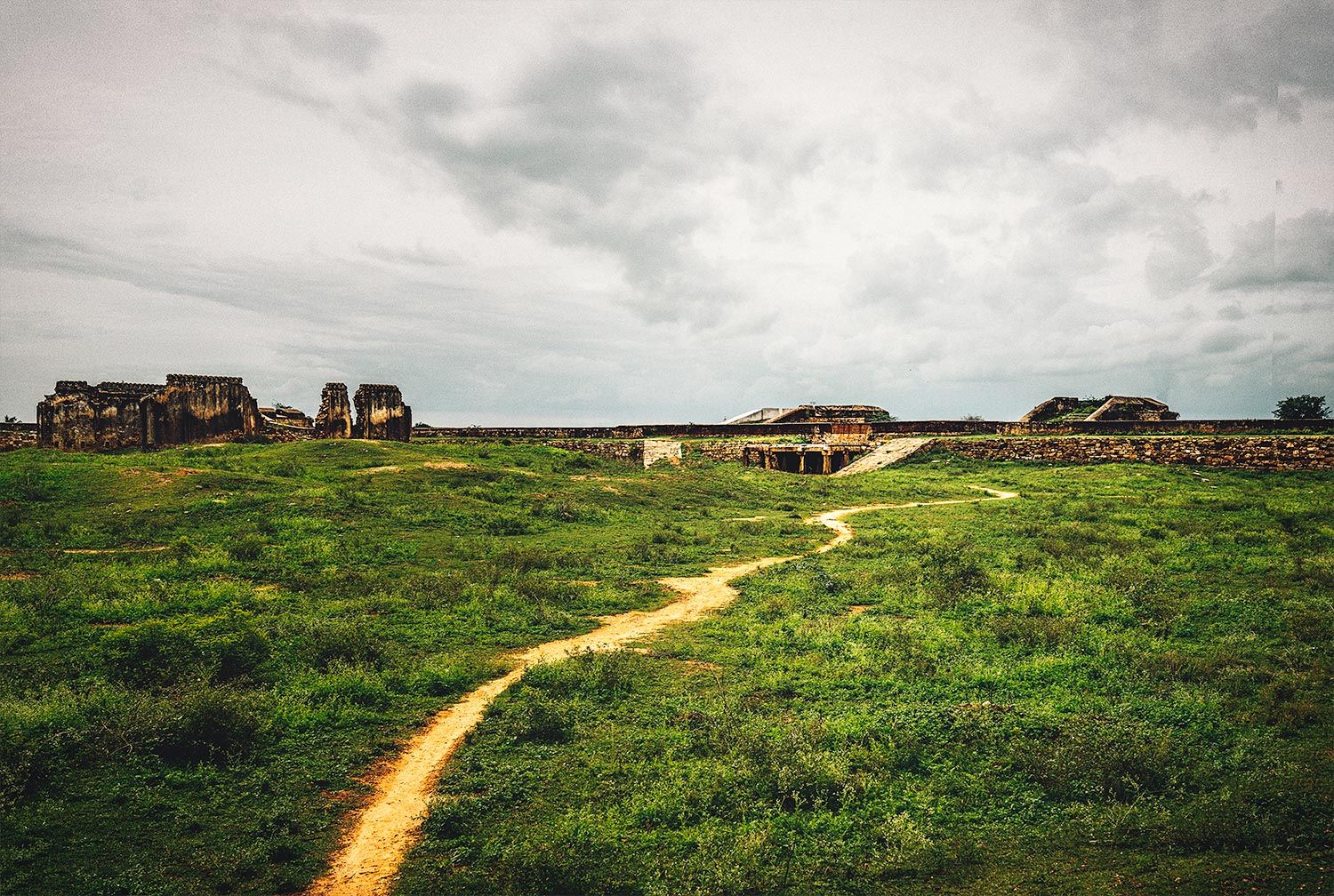Muddling Around at the Sira Fort
This huge fort — its ramparts still standing — was built in the time of the Vijayanagara empire, passing down to a succession of other dynasties: the Bijapur sultans, the Mughals, Haidar Ali and Tipu Sultan, the Marathas, and, finally, the Raj.

The historic Sira fort, of great strategic importance in its time, is reduced to a large, open-air, public lavatory. It is put to one other use: Folks take goats into it for grazing. I also saw a rough-made cricket pitch with a few stones that served as wickets — a reasonable area has been cleared to make room for a decent game.
This huge fort — its ramparts still standing — was built in the time of the Vijayanagara empire, passing down to a succession of other dynasties: the Bijapur sultans, the Mughals, Haidar Ali and Tipu Sultan, the Marathas, and, finally, the Raj. Now it is a republican asset of great value, but lacking upkeep. Folks from Sira town outside use it for open-air defecation.
I discovered what the fort has become while composing a shot of the moat on my camera. I very nearly stepped on somebody's mess.
It was late morning, and at that hour the fort was empty of people. Wild grass ruled the place. Just as you enter, the vestiges of a palatial building appear. A smallish gumbaz peers out of the thorny wilderness that has sprung around it. Those two structures, together with the fort walls, are the entire vista seen from the top of the ramparts. Beyond the fort, two large water bodies add colour to the place: a smaller one (Chikkakere) on the one side, a larger one (Doddakere) on the other.
It is not a large fort, and evokes none of the grandeur of the Mughals, hasn't the super-size monuments of the Bijapur sultans, or edifices that stand up to the works of Vijayanagara. It is not a hill fort, it is situated on a vast plain with a moat around it. It is not as imposing as, say, the Chitradurga fort. But the fort was (it is said) host to Aurangzeb when he was his father's viceroy in charge of peninsular India. A short distance out of the fort there's a clutch of masjids and ancient Muslim burials. Locals point one among them and say Aurangzeb's daughter is interred there.

I took pictures of the straight lines of the battlements, of the wasteland bounded by the walls, tried to fill my frame with the remains of what must've been large structures in their time. No view was photogenic, everything was patted down by time. So I focused my lens on declarations of modern-day love carved into plaster in stone-age style with stone-age craftsmanship.
The fort was still empty. I started down a ramp to explore the grounds before me — when six children appeared at the bottom. They were teasing and laughing and being the ten-twelve-thirteen-year-olds they seemed to be.
"Stand there," I said to them, and shot them with their arms on each other's shoulders. "Looks good," I said, and they clambered up to see themselves on a 3-inch frame. Then they asked about me. I answered them, worrying if they'd scratched my car on their way in.
"Have you seen the tunnels, sir? The palace? The elephant well? Horse well? Raja-Rani's tombs? Anjaneya temple?"
I scanned the flat lay of the land. "No," I said, "I've seen nothing."
"Come. We'll show you," the little fellows said, tugging at me. "Let's show him everything," they said to each other.
Indeed there were tunnels. They showed me two that flanked the brow of the main gate of the fort, on the inner corners of the battlements. "They go on until Chitradurga," the boys said. That would've been a long crawl. These passages weren't high enough to take a horse-rider, or even a standing man. "Go in," they said, urging me, and themselves scurried into one. I did try, crouching, struggling with my camera and bag. Then I said, "No. Another day."
"Come on then," they said. "To the gunpowder place."
At the first bastion we came to, they pointed to hollows on stony ground, big and small hollows for large and slight pestles. "There's treasure beneath these stones," they said. "People come at night and dig. Do you know how the police come to know about it? They hear the tung, when the iron rod hits the stone. Then they come chasing."
When the kids said "tung," the sound rang sweet coming out their young throats into the big open.
To get to the tombs we'd to walk the length of one wall, and a half-length of the next one. There was not a structure in sight — only creeper and grass and shrub. "Here," they said, leading me down crude steps. "There," they said, pointing to a knotted mass of creepers and thorny jaali. I saw nothing. "Look in," they said, pulling up the creepers. There was a clutter of bricks, some small slabs, and such evidence of a broken-apart structure abutting the fort wall. A structure not so large, not too small.
"**Kasturi Rangappa Nayaka *'s tomb," they said. "And the queen's and the * rajkumara' s," they added, breathless like they were sharing hidden treasure with me. "The English stole everything beneath." They repeated the line and now attributed the crime to robbers. "They still come and dig." I couldn't ask them the question that came to mind. Did the sultans who captured the fort allow Hindu Nayak tombs to stay on? Sira was taken from the Nayaks in 1637 by Afzal Khan, general of Sultan Adil Shah of Bijapur, the same Afzal Khan whom Shivaji clawed to death. The Bijapur sultanate held Sira until Aurangazeb ousted them fifty years later. Haidar Ali gained the fort next, lost it to the Marathas, and his son Tipu took it back again, and lost it to the British, who held it for a century and a half.
The excitement shifted toward the wells. "There are two, sir! We'll take the short cut," one said.
"No," said the others. "There are thorns on it."
"That's not a problem," the first one argued.
His name was Lakshmana. I went with him, and the others came round the long way. Lakshmana wore no slippers, and indeed there were jaali thorns along the path, thick, white, long, and sharp, which he pulled from his soles and walked on. "You aren't wearing slippers," I exclaimed. "He's not a human sir," the others who'd joined us by then told me. "Throw him from any height. Hit him with anything. He will live."
I considered Lakshmana, who was thin, dark, and positively undernourished.
It was a large well, and quite deep down to the water level, but there was no way to tell the depth under water. A sheet of moss carpeted it all over. Many geejagana goodu (weaver's nests) hung over the water from the branches of surrounding trees.
In the meantime, the boys had taken to beating down butterflies, and they killed a good number. They used fresh-plucked sticks with leaves and branches still on them. The small, pale green things were easy prey. Each swish of the stick got at least one. "Stop it," I said to them. "Stop, it," they said to each other. "Cruelty to animals is a maha-sin!" they proclaimed, and paused, and recovered, and when one of them resumed the killing, they joined him.
Two more kids appeared in the distance. The red T-shirt of one of them was striking and in sharp contrast with the masses of green and granite. "Thuth!" my six companions said. "Those two are terrible. They kill puppies. That's all they do." The pair made straight for us and merged with the six, grinning wide and looking frail and incapable of killing a gnat even.
"Come," they tugged at me again. "The elephant well is better." The second well appeared of a sudden, its mouth much broader than the first, and perhaps deeper. Its water was also under moss. There was no wall or parapet round the well to stop the unaware from walking into disaster. The kids ran to the opposite bank, where, sitting dangerously on a ledge cantilevered far into the well-mouth, they asked for a picture.
And they dragged me to the horakote, the outer wall on the back, for another shot. "At the Anjaneya temple we'll sit on top for the pictures," they said, even as they packed themselves tight into the small door of the inner wall and posed. The temple had appeared like a gumbaz from the ramparts, and now, inside, it seemed even more Islamic. But the kids were confident it had been a temple, and they showed me where the deity had been. "A murder happened here," they said. So the murthi was moved to the courts, and afterward, to a temple in town.
I heard them out, believing and disbelieving. I had a challenge on hand now, at the end of the tour they'd given me. The kids had spent more than two hours with me, had been kind and respectful and helpful.
With that, we came to the end of the unplanned tour which the children had treated me to. The story of how I struggled to persuade them to accept soft drinks is just as long. I might tell it another time.
